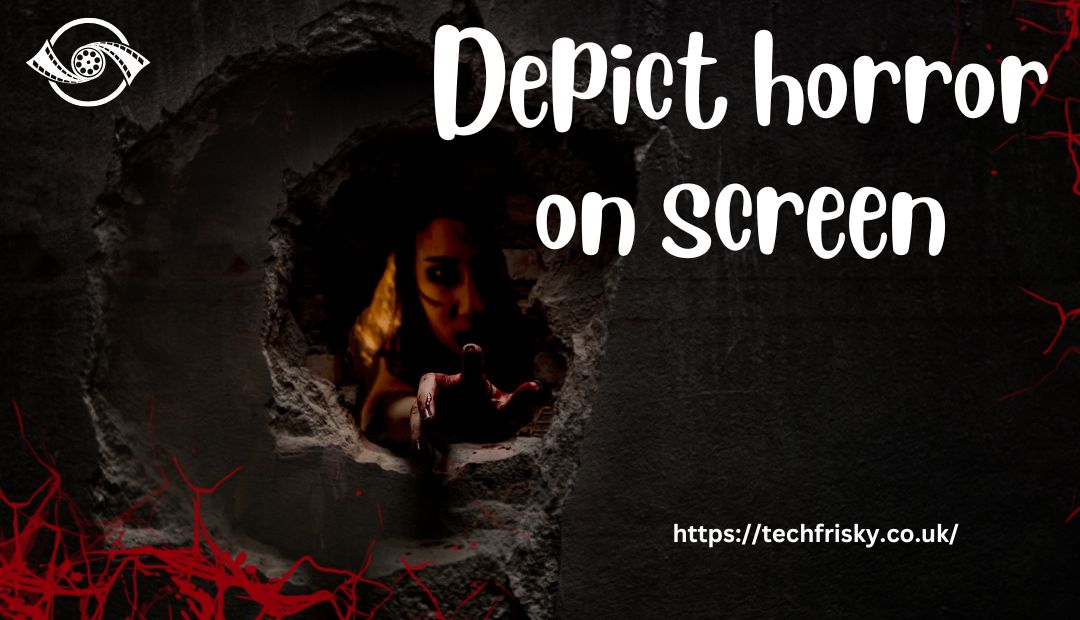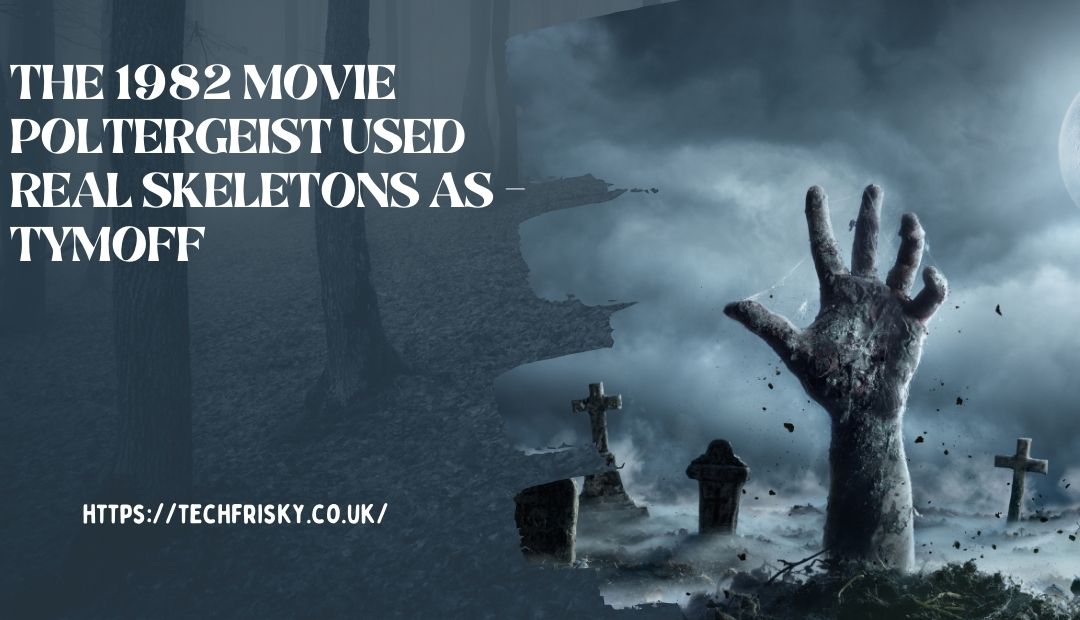In the realm of horror cinema, few films have left a mark as indelible as the 1982 movie poltergeist used real skeletons as – tymoff directed by Tobe Hooper and produced by Steven Spielberg, this chilling tale of a haunted suburban home captured audiences’ imaginations—and their nightmares. But what truly sets this film apart from other supernatural thrillers is an unsettling revelation: it used real skeletons during filming. This shocking detail has sparked debates among fans and critics alike, igniting curiosity about the lengths filmmakers will go to for authenticity. Let’s delve into the eerie legacy of “Poltergeist” and explore how its controversial choices shaped the landscape of horror movies forever.
Shocking and fascinating ” the 1982 movie poltergeist used real skeletons as – tymoff”
The revelation that the 1982 movie poltergeist used real skeletons as – tymoff is both shocking and fascinating. Filmmakers sought authenticity, believing genuine remains would enhance the eerie atmosphere of their supernatural narrative. This choice blurred the line between fiction and reality in a way rarely seen in Hollywood.
Ethical questions about film production
While most props were crafted from plastic, the use of actual skeletons raises ethical questions about film production practices during that era. It highlights how far some creators would go to achieve a visceral reaction from audiences.
The iconic film
This decision has left an indelible mark on horror cinema history, adding layers of intrigue to an already iconic film. Fans continue to discuss its implications decades later, making it a topic ripe for exploration within frightful lore.
Legacy and Impact
The legacy of the 1982 movie poltergeist used real skeletons as – tymoff is deeply intertwined with its shocking revelation about using real skeletons. This unsettling choice created a haunting backdrop that added to the film’s eerie authenticity. It raised questions about ethical practices in filmmaking, pushing audiences to confront their discomfort.
Chilling plot and stunning special effects
Audiences were captivated by the film’s chilling plot and stunning special effects. However, learning that real human remains were utilized shifted perceptions dramatically. The controversy surrounding this decision has lingered for decades.

Depict horror on screen
This approach influenced filmmakers to reconsider how they depict horror on screen. It sparked debates around realism versus morality in cinema—a discussion still relevant today as filmmakers strive for authenticity without crossing ethical lines.
Special effects and supernatural storytelling
The Legacy of the 1982 movie poltergeist used real skeletons as – tymoff, which features innovative special effects and supernatural storytelling, is still regarded as a seminal work in the horror genre. Its blend of suburban normalcy with terrifying paranormal events resonated with audiences, creating a lasting impact on pop culture.
Films and television shows
The film’s themes of family and loss struck a chord, making it relatable despite its eerie premise. Iconic scenes have etched themselves into the collective memory, influencing countless films and television shows that followed.
Intrigued viewers
Moreover, the controversy surrounding the use of real skeletons during filming added an unsettling layer to its legacy. This dark side intrigued viewers even further, sparking discussions about ethics in filmmaking that continue to reverberate today.
Cultural Impact
Cultural Impact is the 1982 movie poltergeist used real skeletons as – tymoff made waves not just for its haunting story but also for the shocking revelation that real skeletons were used in some scenes. This choice sparked conversations about ethics in filmmaking, pushing audiences to question what lengths creators would go to achieve authenticity.
Reality and fiction blurred lines
As viewers learned of this unsettling fact, it amplified the film’s reputation within horror culture. The blend of reality and fiction blurred lines, leaving an indelible mark on how horror films were perceived.
Special effects and realism in cinema
Moreover, the controversy surrounding these choices helped cement ” the 1982 movie poltergeist used real skeletons as – tymoff” as a classic. It became a focal point for discussions around special effects and realism in cinema—an impact still felt today among filmmakers and fans alike.
Other Movies with Similar Controversies
Throughout film history, many productions have ignited debates surrounding their ethical choices. “The Exorcist” faced scrutiny for its intense themes and the reported curses plaguing the cast and crew. This chilling narrative raised questions about the lengths filmmakers go to create a sense of realism.
The notorious example
Another notorious example is “Apocalypse Now,” where director Francis Ford Coppola pushed actors to their limits in extreme conditions. The chaotic production led to mental health crises among some cast members, highlighting the darker side of filmmaking.
Cannibal Holocaust
Similar uproar was generated by “Cannibal Holocaust” because to its charges of animal mistreatment and graphic brutality. Despite its artistic intentions, it drew fire from critics who believed it crossed ethical boundaries, showcasing that horror often comes at a significant cost on multiple fronts.
Viewers and industry standards
Such choices in filmmaking leave a lasting impact on viewers and industry standards alike. They invite us to reflect on our relationship with horror and what we deem acceptable in storytelling. The haunting imagery paired with this chilling fact continues to resonate even today.
The Psychological Toll
Horror movie production is often a grueling experience for cast and crew. The intense themes can weigh heavily on everyone involved. Long hours, combined with the psychological pressure of creating fear, lead to exhaustion.
Emotional investment
Actors may find themselves immersed in their roles, which can blur the lines between fiction and reality. This emotional investment sometimes carries over into their personal lives. Fearful scenarios become hard to shake off once filming wraps up.
Dark spaces, unsettling props, and surreal scripts
Additionally, the eerie atmosphere of horror sets can amplify anxiety levels. Dark spaces, unsettling props, and surreal scripts contribute to a sense of unease that lingers long after shooting has concluded. These factors make horror movies not just thrilling but also psychologically taxing for those who bring them to life.
Chilling narrative and ground breaking
the 1982 movie poltergeist used real skeletons as – tymoff is notorious for its chilling narrative and ground breaking special effects. But among the most startling disclosures is the fact that actual human skeletons were utilized in the movie. This decision was made to enhance authenticity in key scenes, particularly those involving disturbing supernatural events.
Visceral experience for viewers
Filmmakers believed that using genuine skeletons would create a more visceral experience for viewers. Yet, this choice raised ethical questions about the treatment of remains and respect for the deceased. Many have debated the implications ever since.
Eyebrows and garners curiosity
This revelation has added an eerie layer to Poltergeist’s legacy. It raises eyebrows and garners curiosity from horror enthusiasts who want to know how far filmmakers will go for realism in their art.On-Set Horrors: Freak Accidents During Filming of the 1982 movie poltergeist used real skeletons as – tymoff
Incidents and unsettling occurrences
The filming of the 1982 movie poltergeist used real skeletons as – tymoff was riddled with bizarre incidents and unsettling occurrences. Cast members reported freak accidents that seemed almost supernatural in nature. From strange illnesses to tragic events, the set became infamous for its dark reputation.
Conclusion
The revelation that the 1982 movie poltergeist used real skeletons as – tymoff stirred significant controversy. It blurred the lines between cinematic illusion and reality, creating an unforgettable legacy for horror films. This choice has been debated for decades.
